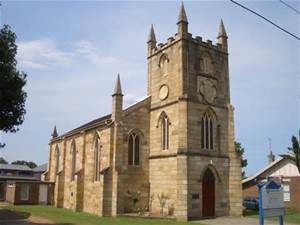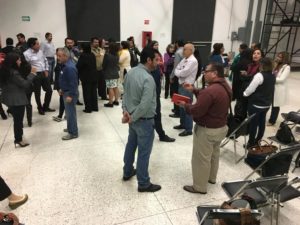Paul’s letters to churches were “distance learning.”
Biblical Basis for Seminary
 Traditionally, a seminary has been a place of study to train clergy, religious personnel, chaplains, or lay leaders. The word “seminary” comes from a Latin root meaning to plant a nursery, sow a seed bed, launch a breeding ground, or begin a process. The word was used early to identify both pastoral training for priests and girls’ schools. Religious training meant that people who wanted to give their lives to the spiritual service of others would prepare at a place with experienced professors who would teach subjects—preparing through practice—the responsibilities of priests, pastors, or church leaders.
Traditionally, a seminary has been a place of study to train clergy, religious personnel, chaplains, or lay leaders. The word “seminary” comes from a Latin root meaning to plant a nursery, sow a seed bed, launch a breeding ground, or begin a process. The word was used early to identify both pastoral training for priests and girls’ schools. Religious training meant that people who wanted to give their lives to the spiritual service of others would prepare at a place with experienced professors who would teach subjects—preparing through practice—the responsibilities of priests, pastors, or church leaders.
 Seminaries began because church leaders saw the need to train the next generation of clerics (2 Tim 1:12-14; 2:2) churches also were concerned that the seminaries so begun were becoming errant in doctrine, launching new institutions (2 Tim 1:15; 2:16-19). The concern for transferring sound doctrine (Titus 1:9-2:1; 3:9-11), has been the primary Christian impetus in both seminary commencement and expansion. Seminaries can be found wherever the Christian church can be found, providing nurseries for the Christian mind.
Seminaries began because church leaders saw the need to train the next generation of clerics (2 Tim 1:12-14; 2:2) churches also were concerned that the seminaries so begun were becoming errant in doctrine, launching new institutions (2 Tim 1:15; 2:16-19). The concern for transferring sound doctrine (Titus 1:9-2:1; 3:9-11), has been the primary Christian impetus in both seminary commencement and expansion. Seminaries can be found wherever the Christian church can be found, providing nurseries for the Christian mind.
Historical Context
 Brick and mortar edifices have been created to serve student learning for centuries. Anchored by majestic buildings, students were required to live in a certain place to be educated. Such seminaries hired professors to live in the same locale to teach and mentor future church leadership. Ancient schools, Tyrannus in Ephesus for example (Acts 19:8-10), were established places of learning where students would go to sit under the tutelage of a favorite teacher. Early church leaders like Paul utilized such facilities but were constantly on the move, taking themselves to the people to teach where they were invited or found a receptive audience (i.e., Acts 19:21-22). Both historic patterns existed—students following teachers and teachers going to students.
Brick and mortar edifices have been created to serve student learning for centuries. Anchored by majestic buildings, students were required to live in a certain place to be educated. Such seminaries hired professors to live in the same locale to teach and mentor future church leadership. Ancient schools, Tyrannus in Ephesus for example (Acts 19:8-10), were established places of learning where students would go to sit under the tutelage of a favorite teacher. Early church leaders like Paul utilized such facilities but were constantly on the move, taking themselves to the people to teach where they were invited or found a receptive audience (i.e., Acts 19:21-22). Both historic patterns existed—students following teachers and teachers going to students.
 At the end of the 20th and beginning of the 21st centuries sending professors to pupils has become a primary delivery system. To some, the internet has made physical moves to a place unnecessary for the training of religious leaders. Purely online degrees exist to serve those who could not connect with teachers face-to-face. Hybrid or blended approaches include pre-work prior to incarnational, on-site meetings, continuing online forums, and final papers sent electronically. Residential programs continue but often combine web-enabled options. Yet the church forms its practice based on its doctrine. Jesus’ incarnation—coming to earth in physical form—necessitates incarnational theology, a physical, local presence. Personal interaction cannot be replaced for the Christian educator. [See my essay on “text-people not textbooks” here.]
At the end of the 20th and beginning of the 21st centuries sending professors to pupils has become a primary delivery system. To some, the internet has made physical moves to a place unnecessary for the training of religious leaders. Purely online degrees exist to serve those who could not connect with teachers face-to-face. Hybrid or blended approaches include pre-work prior to incarnational, on-site meetings, continuing online forums, and final papers sent electronically. Residential programs continue but often combine web-enabled options. Yet the church forms its practice based on its doctrine. Jesus’ incarnation—coming to earth in physical form—necessitates incarnational theology, a physical, local presence. Personal interaction cannot be replaced for the Christian educator. [See my essay on “text-people not textbooks” here.]
Missional Direction
 Seminaries tend to focus on denominational roots, theological persuasions, programmatic foci, or personality appeals. Local church history may also direct students toward certain institutions. But most Christians come back to the same concept of missional direction: entrusting the next generation with The Word of God (2 Tim 1:14; 2:2; Titus 1:4). The Christian church should be an inclusive body, standing on the foundation of Scripture (Acts 2:5-11, 42-49; 15; Gal 3:29; James 2; Rev 5:9). 21st century educational focus is returning to the roots of theological thinking which began in Asia and Africa with scholars such as Augustine. His treatise “On Doctrine” provides guidance for educational direction, methods, qualifications, etc. A clear precedent of utilizing cultural tools [see my essay here] and situational options to communicate the gospel and grow maturing believers is evident in every generation.
Seminaries tend to focus on denominational roots, theological persuasions, programmatic foci, or personality appeals. Local church history may also direct students toward certain institutions. But most Christians come back to the same concept of missional direction: entrusting the next generation with The Word of God (2 Tim 1:14; 2:2; Titus 1:4). The Christian church should be an inclusive body, standing on the foundation of Scripture (Acts 2:5-11, 42-49; 15; Gal 3:29; James 2; Rev 5:9). 21st century educational focus is returning to the roots of theological thinking which began in Asia and Africa with scholars such as Augustine. His treatise “On Doctrine” provides guidance for educational direction, methods, qualifications, etc. A clear precedent of utilizing cultural tools [see my essay here] and situational options to communicate the gospel and grow maturing believers is evident in every generation.
Once focused solely on strict study of languages, theology, and liturgical practices seminaries have expanded their offerings. Fast cultural changes have forced seminary education to grow new curricula. Programs such as social justice, human trafficking, cultural interpretation, or filmmaking are examples of a new focus in education. In the past seminaries have taught based on established models. The move is now distinctively toward application/interaction of theological insights with current cultural needs.
 Instead of relying on a standardized curriculum where application is left to the student upon graduation, practicum learning is an essential component of the teaching-learning process [see my essay here]. Projects, collaboration, and institutional professor/student interchange are now part and parcel of Christian higher education. Diversification of programs allocate a broad spectrum of seminary choices. Flexibility allows the Christian church to be nimble [see my essay] in approach and creative in its use of resources. Where ease of travel exists and electronic communication can be useful, seminaries can flourish, allowing students immediate access to information.
Instead of relying on a standardized curriculum where application is left to the student upon graduation, practicum learning is an essential component of the teaching-learning process [see my essay here]. Projects, collaboration, and institutional professor/student interchange are now part and parcel of Christian higher education. Diversification of programs allocate a broad spectrum of seminary choices. Flexibility allows the Christian church to be nimble [see my essay] in approach and creative in its use of resources. Where ease of travel exists and electronic communication can be useful, seminaries can flourish, allowing students immediate access to information.
 Cost may preclude future students from programmatic, system-based, organized, or accredited seminary experience. Though non-certified, some seminaries have existed offering less substantive training, local churches or denominations may unfold approaches to pastoral training which are smaller, more directed to a situation or locale. Technological interconnectivity may or may not play a major role in such circumstances. If resources such as books and tutors exist within a geographical sphere of influence, distance education could become unnecessary.
Cost may preclude future students from programmatic, system-based, organized, or accredited seminary experience. Though non-certified, some seminaries have existed offering less substantive training, local churches or denominations may unfold approaches to pastoral training which are smaller, more directed to a situation or locale. Technological interconnectivity may or may not play a major role in such circumstances. If resources such as books and tutors exist within a geographical sphere of influence, distance education could become unnecessary.
 Local development of church leaders has been the focus since Acts, the epistles, and the early church. Paul (Titus 1), John (3 John), and Peter (1 Peter 5:1-4), for instance, assumed the role of traveling overseer, communicating preparation responsibility through letters to local assemblies. Persecution could also drain leaders from neighborhood churches. In such cases, education of church shepherds will necessitate close, interpersonal discipleship. Past foreseeing future problems and possibilities, seminaries will continue to water leadership seeds in the Christian church patterned after prophetical schools (i.e., 1 Sam. 19:18-24; 2 Kings 2:3, 5, 7, 12, 15) and traveling professors (2 Chron 17:7-9). [See my essay on The Church here.
Local development of church leaders has been the focus since Acts, the epistles, and the early church. Paul (Titus 1), John (3 John), and Peter (1 Peter 5:1-4), for instance, assumed the role of traveling overseer, communicating preparation responsibility through letters to local assemblies. Persecution could also drain leaders from neighborhood churches. In such cases, education of church shepherds will necessitate close, interpersonal discipleship. Past foreseeing future problems and possibilities, seminaries will continue to water leadership seeds in the Christian church patterned after prophetical schools (i.e., 1 Sam. 19:18-24; 2 Kings 2:3, 5, 7, 12, 15) and traveling professors (2 Chron 17:7-9). [See my essay on The Church here.
 “Seminaries” © is one of 22 articles included in History of Christianity in the United States (Rowman & Littlefield, 2016) by Dr. Mark Eckel. Mark is President of The Comenius Institute (one minute video here). Picture credit: Snappygoat.com
“Seminaries” © is one of 22 articles included in History of Christianity in the United States (Rowman & Littlefield, 2016) by Dr. Mark Eckel. Mark is President of The Comenius Institute (one minute video here). Picture credit: Snappygoat.com
References and Resources
Anthony, J. Michael and Warren S. Benson. Exploring the History and Philosophy of Christian Education: Principles for the Twenty-First Century. Grand Rapids, MI: Kregel Academic & Professional, 2003.
Introducing Christian Education: Foundations for the 21st Century. Grand Rapids, MI: Baker, 2001.
Banks, Robert. Reenvisioning Theological Education: Exploring a Missional Alternative to Current Models. Grand Rapids, MI: Eerdmans, 1999.
Billman, Kathleen D. and Bruce C. Birch, eds. C(H)AOS Theory: Reflections of Chief Academic Officers in Theological Education. Grand Rapids, MI: Eerdmans, 2011.
Hill, Kenneth. Religious Education in the African American Tradition: A Comprehensive Introduction. Atlanta, GA: Chalice Press, 2007.
House, Paul R. Bonhoeffer’s Seminary Vision: A Case for Costly Discipleship and Life Together. Wheaton, IL: Crossway, 2015.
Mulphers, Aubrey. Ministry Nuts and Bolts: What They Don’t Teach Pastors in Seminary, 2nd ed. Grand Rapids, MI: Kregel Academic & Professional, 2009.
Parrett, Gary A. and S. Steve Kang. Teaching the Faith, Forming the Faithful: A Biblical Vision for Education in the Church. Downers Grove, IL: InterVarsity Press, 2009.
Tidball, Derek. Ministry by the Book: New Testament Patterns for Pastoral Leadership. Downers Grove, IL: InterVarsity, 2009.



